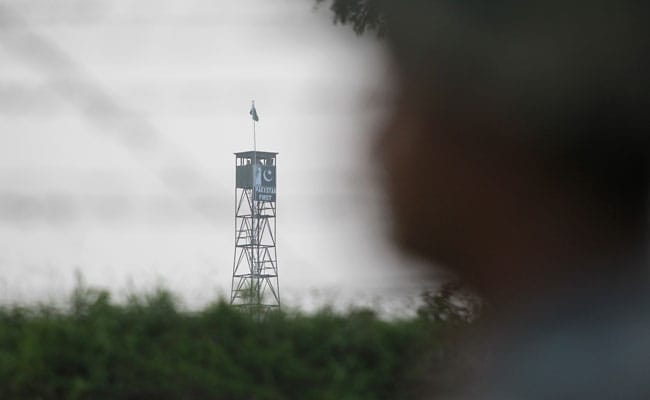Watch Video:
After Violent Clash, China Claims Sovereignty Over Galwan Valley for First Time in Decades
For India, Galwan was always seen as the area where the lay of the Line of Actual Control was not disputed.
 Satellite image of the Galwan valley at the point where the Galwan river enters the Shyok river Photo Credit: The Wire/Google Maps
Satellite image of the Galwan valley at the point where the Galwan river enters the Shyok river Photo Credit: The Wire/Google Maps
New Delhi: The Chinese military’s statement on the violent clash in eastern Ladakh has a claim that China has not made directly for decades – sovereignty over entire the Galwan valley.
The Indian Army has stated that 20 Indian soldiers were killed in action in a violent face-off with Chinese soldiers in the Galwan area on Monday night. This marked a sharp escalation in tensions between the two countries, who had reportedly been in the midst of a process of disengagement from their stand-off that began six weeks ago.Both the Chinese foreign ministry and army asserted that Indian troops had provoked the violence by crossing over to their territory, but the latter explicitly cited China’s claims.“The sovereignty over the Galvan Valley area has always belonged to China,” said PLA western theatre command spokesperson Colonel Zhang Shiuli.
While a Chinese map of 1962 extends its boundary up to the Shyok river – the zone of contention today – for India, Galwan was always seen as an area where the lay of the Line of Actual Control (LAC) was not disputed, unlike in other places like Pangong Tso, where there were overlapping claims.
Therefore, it had been a rude wake-up call when India first observed Chinese troops pouring into the Galwan region in early May, leading to the first face-off on the night of May 5-6.Indian military sources had said that the Chinese build-up of troops in Galwan had been unexpected since this was usually the season for PLA to conduct exercises at their traditional grounds at Kangixwar and Xaidulla. Instead, India had claimed that China had violated the spirit of the border agreement, by not confining their troops to their traditional exercise grounds, but rather spilling them from Galwan into other areas of contention in eastern Ladakh.
Galwan has a role in historical memory of the Sino-Indian conflict as it was the first Indian post that was overwhelmed by the Chinese in summer of 1962 – and was one of the first markers of the start of the war.
However, since then, Galwan had been a relatively peaceful area of the LAC, where Indian and Chinese patrol teams did not come face-to-face unlike other contentious sections, as per Indian military sources. The situation has changed now.
Fifty-eight years after 1962, the capture of Galwan river valley provides the PLA strategic domination over positions overlooking India’s Darbuk-Shyok-Daulat Beg Oldi (DSDBO) road, which connects Leh to the Karakoram Pass.India had started work on DSDBO road in 2001, but it was finally completed after a realignment of the section along the Shyok river last year.
At various border meetings after the stand-off, the Chinese had repeatedly raised concern about the DSDBO road – even though the Indian side had been sceptical that China was articulating the real motivation for its actions in eastern Ladakh.
The highest-level military level meeting on the current crisis was held on June 6 at Chushul between Leh corps commander Lieutenant General Harinder Singh and South Xinjiang Military Region’s Major General Liu Lin.
On June 10, Ajai Shukla had first written, in The Wire, that PLA negotiators had refused to even discuss the intrusions by their troops into Galwan river valley, instead claiming ownership over the entire area.
At the June 6 talks, the Chinese had asserted that their ownership of the entire Galwan valley, claiming that they had controlled the hills along the river for “as long as they could remember”.Shukla also wrote that by dominating the DSDBO road, China had also managed to isolate the Depsang area, where a substantial Chinese presence had also been observed.
Note: The article has been edited to add a reference to China’s 1962 map
 The Servant of Sahibs | Source: Sandeep Chaudhary
The Servant of Sahibs | Source: Sandeep Chaudhary


